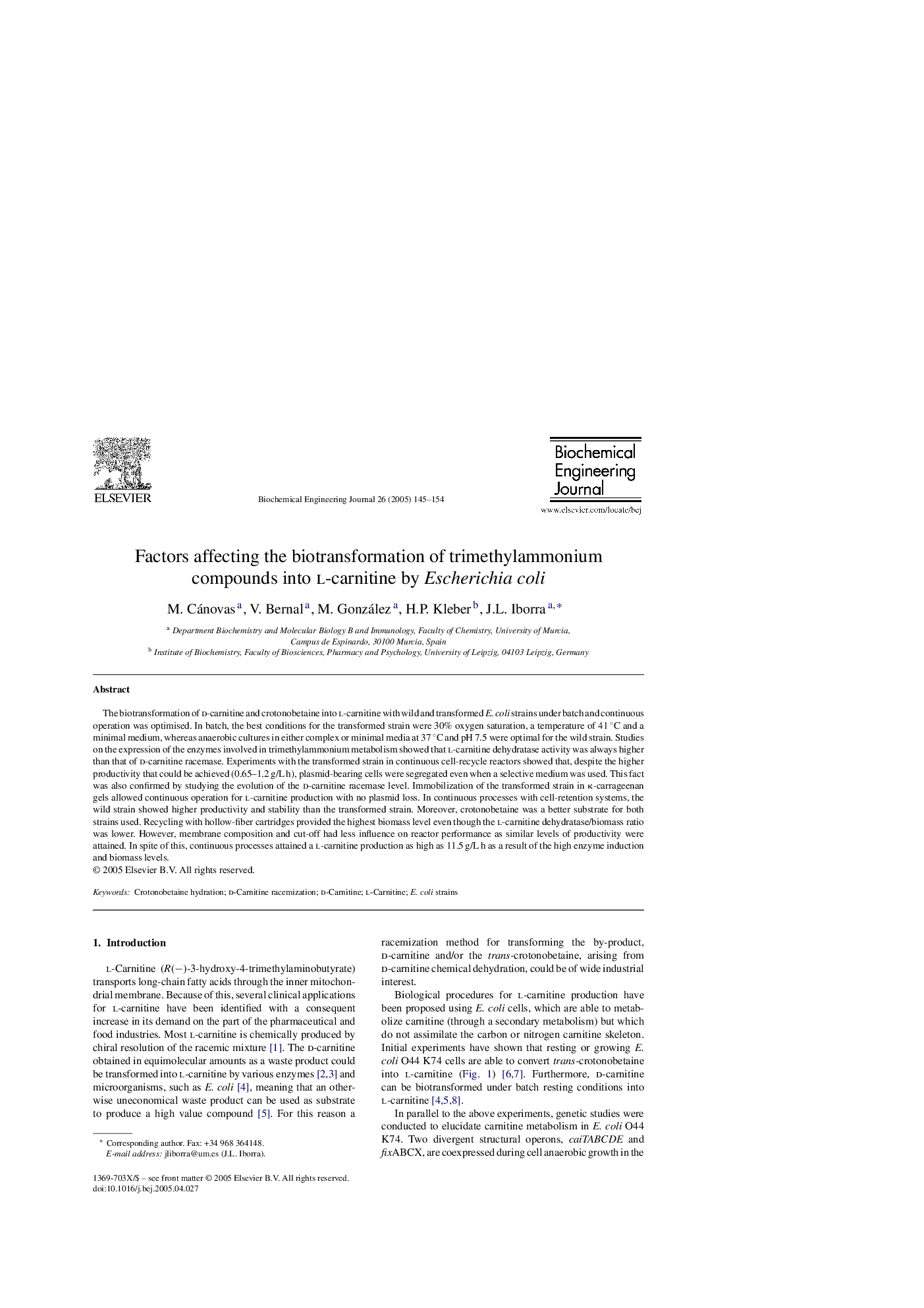| کد مقاله | کد نشریه | سال انتشار | مقاله انگلیسی | نسخه تمام متن |
|---|---|---|---|---|
| 8966296 | 259 | 2005 | 10 صفحه PDF | دانلود رایگان |
عنوان انگلیسی مقاله ISI
Factors affecting the biotransformation of trimethylammonium compounds into l-carnitine by Escherichia coli
دانلود مقاله + سفارش ترجمه
دانلود مقاله ISI انگلیسی
رایگان برای ایرانیان
کلمات کلیدی
موضوعات مرتبط
مهندسی و علوم پایه
مهندسی شیمی
بیو مهندسی (مهندسی زیستی)
پیش نمایش صفحه اول مقاله

چکیده انگلیسی
The biotransformation of d-carnitine and crotonobetaine into l-carnitine with wild and transformed E. coli strains under batch and continuous operation was optimised. In batch, the best conditions for the transformed strain were 30% oxygen saturation, a temperature of 41 °C and a minimal medium, whereas anaerobic cultures in either complex or minimal media at 37 °C and pH 7.5 were optimal for the wild strain. Studies on the expression of the enzymes involved in trimethylammonium metabolism showed that l-carnitine dehydratase activity was always higher than that of d-carnitine racemase. Experiments with the transformed strain in continuous cell-recycle reactors showed that, despite the higher productivity that could be achieved (0.65-1.2 g/L h), plasmid-bearing cells were segregated even when a selective medium was used. This fact was also confirmed by studying the evolution of the d-carnitine racemase level. Immobilization of the transformed strain in κ-carrageenan gels allowed continuous operation for l-carnitine production with no plasmid loss. In continuous processes with cell-retention systems, the wild strain showed higher productivity and stability than the transformed strain. Moreover, crotonobetaine was a better substrate for both strains used. Recycling with hollow-fiber cartridges provided the highest biomass level even though the l-carnitine dehydratase/biomass ratio was lower. However, membrane composition and cut-off had less influence on reactor performance as similar levels of productivity were attained. In spite of this, continuous processes attained a l-carnitine production as high as 11.5 g/L h as a result of the high enzyme induction and biomass levels.
ناشر
Database: Elsevier - ScienceDirect (ساینس دایرکت)
Journal: Biochemical Engineering Journal - Volume 26, Issues 2â3, 15 November 2005, Pages 145-154
Journal: Biochemical Engineering Journal - Volume 26, Issues 2â3, 15 November 2005, Pages 145-154
نویسندگان
M. Cánovas, V. Bernal, M. González, H.P. Kleber, J.L. Iborra,